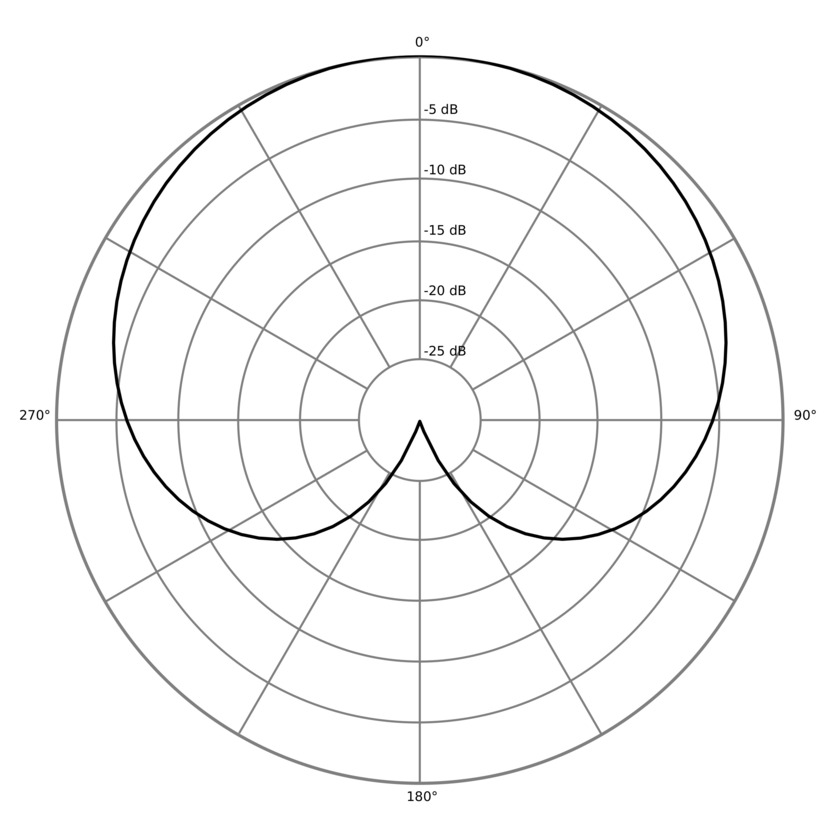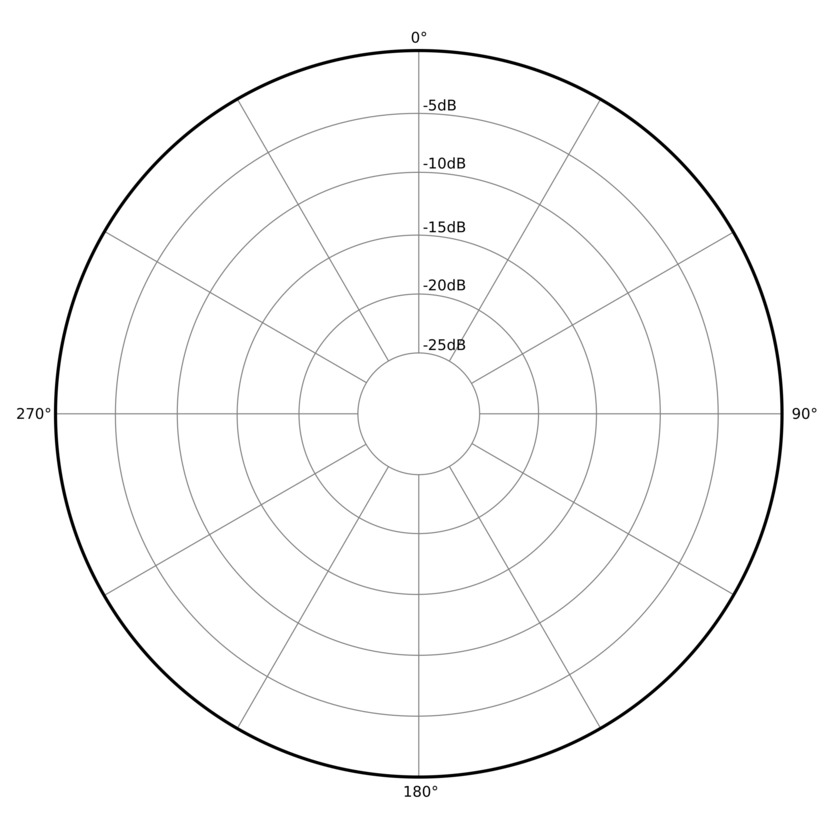Microphones come in all shapes and sizes, one aspect of which is their polar patterns. Understanding these polar patterns and the scenarios in which they excel can bolster your overall knowledge of sound recording. Here is the complete list of all the different polar patterns and everything you need to know about them.
Definition of Polar Patterns
Polar patterns indicate the microphone’s sensitivity to audio signals from various directions and angles. Every microphone has a definitive polar pattern, with certain patterns better suited for specific scenarios such as recording vocals, instruments, or ambiances. Some high-end microphones feature interchangeable polar patterns, greatly extending their versatility.
Polar patterns are shown using a circular 2D graph of the microphone’s pickup sensitivity, measured in decibels (dB). The top of the circle represents 0° – the area directly in front of the microphone. The sides (270° and 90°) are left and right, and the bottom (180°) is the back of the microphone. Each one has its unique shape; the area inside the shape represents what the microphone can pick up. Anything outside the shape is a null area where sound is rejected.
Cardioid
Arguably, the most common type of polar pattern is the cardioid. It’s a standard polar pattern that serves as a great all-rounder. The term “cardioid” is inspired by its heart-like shape. Capturing sound well at the front and rejecting it from the back, it’s ideal for dialogue, instrumental, and foley applications. Most large-diaphragm condenser microphones feature a cardioid polar pattern, essential in every audiophile’s setup.

Although they are a staple in every gear collection, be mindful that cardioid microphones aren’t very precise in directionality. They can pick up background noise due to their strong sensitivity around the front. If you’re looking to record a specific distant sound, this microphone might not be suitable, as it tends to pick up virtually anything in front of it.
Recommendations:
Supercardioid
A supercardioid microphone is ideal for those needing a more directional microphone to isolate sounds better.
The supercardioid polar pattern, a variation of the cardioid, features a narrower sensitivity at the front. Graphically, a supercardioid shows more null areas around the sides compared to the cardioid pattern. Shotgun microphones often feature a supercardioid pattern, making them suitable for boom poles or mounting atop a camera.

However, this pattern’s downside is its susceptibility to picking up sound from behind. Therefore, when recording, ensure the environment behind the microphone is controlled and quiet!
Recommendations:
Hypercardioid
Similar to the supercardioid, the hypercardioid offers tighter directionality for better sound capture precision. These are also found in shotgun microphones and dynamic handheld microphones.
Observing both the hypercardioid and supercardioid patterns, the differences are minimal except in the rear lobe sensitivity. The hypercardioid has a slightly more sensitive rear lobe and is also susceptible to the proximity effect, where bass frequencies become more emphasized as the sound source approaches the microphone. However, the difference is incredibly minuscule.

Due to its side rejection, this polar pattern is efficient in noisier environments, making it ideal for recording very specific sounds. However, if the subject moves off-axis, it can negatively affect the sound quality. Moreover, increased sensitivity at the back will likely capture any noise from behind the microphone.
Recommendations:
Omnidirectional
We’ve so far covered microphones that primarily pick up sounds more so from the front, but for those that need sound from all around the surface of a microphone, well, say hello to omnidirectional! This polar pattern spans 360°, meaning it’s sensitive in all directions.
Omnidirectional patterns are typically found in microphones specially made for recording ambiance, as this field of recording requires a much larger span to be covered. Additionally, omnidirectional patterns are common in lavalier microphones, which are used primarily by content creators or for interviews.

So yes, while these microphones can pick up sound from everywhere—great for certain applications—that is also their downside. Ensure the recording you are doing calls for such a wide capture. Using this in a noisy environment to record specific sounds is almost guaranteed to pick up unwanted noises.
Recommendations:
- Sennheiser EW 112P G4 Lavalier Microphone System
- RODE Lavalier GO
- Clippy em272 XLR (great for field recording)
- Sennheiser MKH 8020
Lobar
The lobar polar pattern is unique due to its extreme directivity. This can be appealing to filmmakers because a highly directional microphone guarantees a clear recording, minimizing background noise.
Lobar microphones, which are shotgun microphones, come in both short and long varieties. Short lobar microphones, primarily used on boom poles, offer good directionality while still capturing some off-axis sound. On the other hand, long lobar microphones provide much narrower directivity, making them ideal for capturing distant sound sources and more precise recordings.

Given their extreme directivity, lobar microphones require precise positioning, far more so than even the most specialized cardioid microphones. A slight misalignment can significantly reduce recording accuracy, making supercardioids and hypercardioids more forgiving options and reducing pressure on the boom operator.
Recommendations:
- Sennheiser MKE 600
- Sennheiser MKH 8070 (Long Lobar)
- Sanken CS-1e (Short Lobar)
Bidirectional (Figure 8)
As previously mentioned, the downside of having sensitivity at the rear lobe of a microphone is significant. However, some microphones are designed to be equally sensitive at the front and back.

Bidirectional microphones are specifically designed to have equal sensitivity at the front and back of the microphone structure. This type of microphone is ideal for conversational purposes, such as podcasts. Due to their omnidirectional nature, these microphones are not typically found on film sets or in musical recording settings. However, a bidirectional microphone can be an excellent choice in a quieter environment where an interview is to be recorded.
Recommendations:
For more on audio, check out the following articles:

